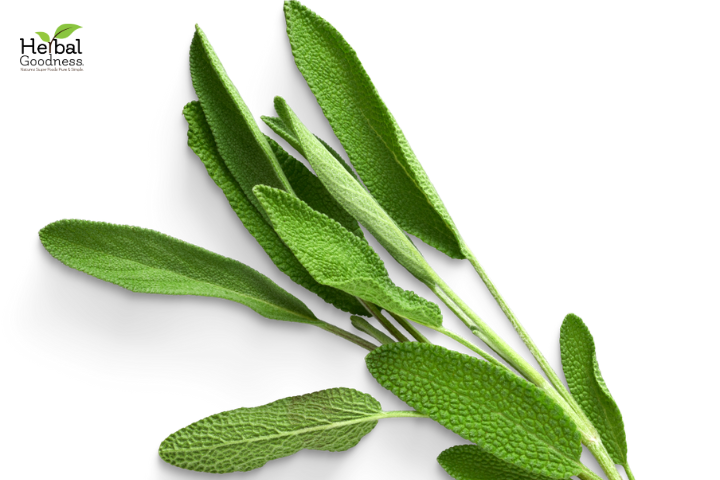
Sage belongs to the mint family and is closely related to rosemary, basil, and thyme. It is renowned for its strong aroma and earthy flavor, making it a popular herb in various cuisines around the world This often-overlooked ingredient is a powerhouse that deserves a permanent place in your kitchen. In this article, we will explore why it is a must-have staple, from enhancing the flavor of your dishes to boosting your overall health. Join us as we delve into the different varieties of sage and discover creative ways to incorporate this versatile herb into your culinary repertoire.
Boosting Your Health with Sage
Sage not only adds a delicious taste to your meals but also offers numerous health benefits that can boost your overall well-being. Here are some of the health benefits associated with it:
- High in Nutrients: it is rich in vitamins and minerals, especially vitamin K, which is essential for blood clotting.
- Loaded with Antioxidants: It contains over 160 distinct polyphenols, which act as antioxidants in your body and may help neutralize potentially harmful free radicals.
- Supports Oral Health: Sage has antimicrobial effects that may protect against microbes that promote dental plaque.
- May Lower Blood Sugar: Some studies suggest that sage may help lower blood sugar levels, although more research is needed in this area.
- May Improve Brain Function: it may help improve memory and brain function. This makes it a potential natural remedy for cognitive decline.
- May Lower ‘Bad’ LDL Cholesterol: Drinking sage tea has been linked to increased levels of ‘good’ HDL cholesterol and decreased levels of ‘bad’ LDL cholesterol.
- May Ease Menopause Symptoms: It has been used traditionally to help alleviate symptoms of menopause, such as hot flashes and night sweats.
Exploring Varieties of Sage
It comes in various varieties, each with its unique flavor profile and characteristics. Common types of sage include common sage (Salvia officinalis), pineapple sage (Salvia elegans), and purple sage (Salvia officinalis ‘Purpurascens’). Common sage is the most frequently used variety in cooking, with its earthy and slightly peppery taste. Pineapple sage has a hint of citrusy sweetness, making it a great addition to fruit salads or desserts. Purple sage not only adds a pop of color to your dishes but also has a milder flavor compared to common sage.
Experimenting with different varieties can add depth and complexity to your dishes, enhancing the overall dining experience. From savory to sweet dishes, each type brings its unique flair to the table. So why not explore and see how these different varieties can elevate your culinary creations?
Now, let’s move on to creative ways to use in your cooking.

Creative Ways to Use it in Your Cooking
Sage is a versatile herb that can add a robust flavor to various dishes. Here are some ways to incorporate it into your cooking:
- Fry it in brown butter: Fry fresh sage leaves until crispy. Use them as a garnish on side dishes like pasta or vegetables.
- Make a compound butter: Mix chopped sage with softened butter to create a flavorful spread. Use for bread, or to melt over steak or fish.
- Season meats: Use it fresh or dried to season chicken, pork, or beef. It pairs particularly well with fatty meats.
- Add to pasta sauces: it goes well with butter-based pasta sauces, especially those with rich cheeses like Parmesan or ricotta.
- Enhance vegetable dishes: Combine sage with garlic and olive oil to season roasted vegetables like potatoes or squash.
- Create marinades and rubs: Incorporate powdered sage into marinades and rubs for an earthy flavor.
- Infuse oils and butter: Steep its leaves in oil or melted butter to infuse the flavor, which can then be used in cooking or as a drizzle.
- Use in stuffings: Chopped sage is a traditional ingredient in stuffings, especially for poultry.
- Bake with it: Add it to your favorite recipes for baked goods, such as breads, muffins, and cookies.
Remember, it has a potent flavor, so start with a small amount and adjust according to your taste preferences. Enjoy experimenting with this aromatic herb in your kitchen!
Conclusion
Sage can be enjoyed fresh, dried, or as an oil. It’s not only a culinary delight but also a beneficial addition to a healthy lifestyle. However, it’s important to use it in moderation, as it’s typically used in small amounts due to its potent flavor.
Incorporating it into your cooking not only enhances the flavor of your dishes but also boosts your health with its impressive benefits. With a variety of options to explore and creative ways to use it in your recipes, this herb is a must-have in any kitchen. So start adding it to your meals today and let its culinary and wellness benefits elevate your cooking experience to a whole new level.


